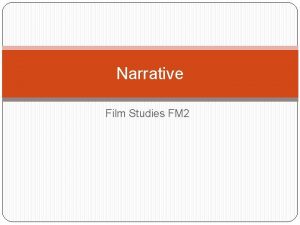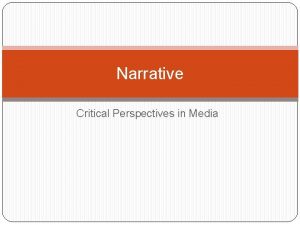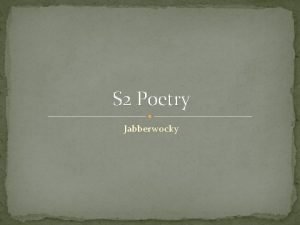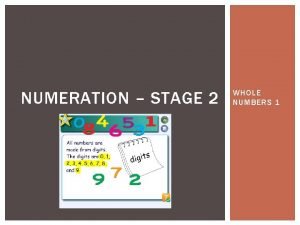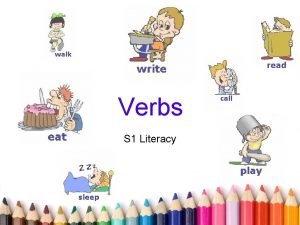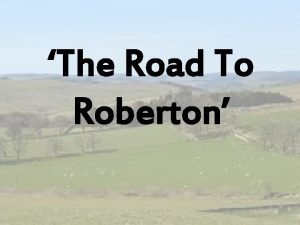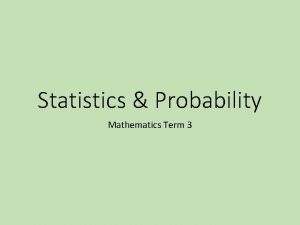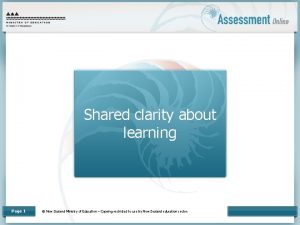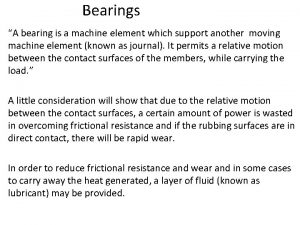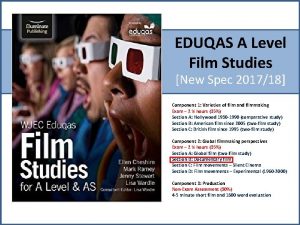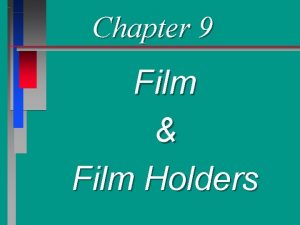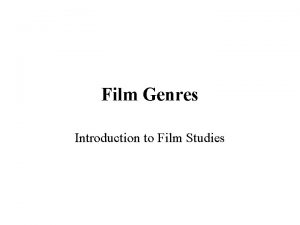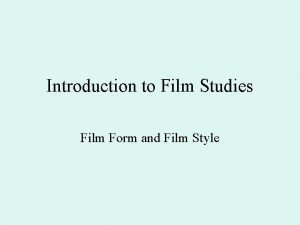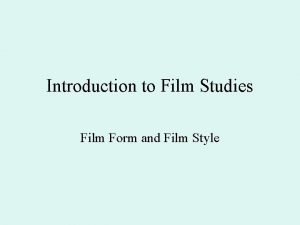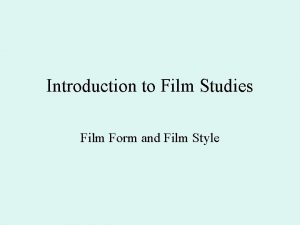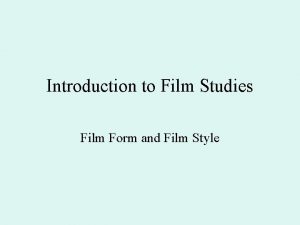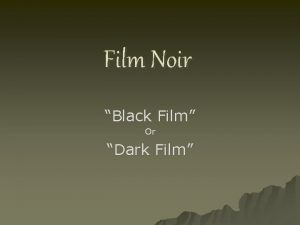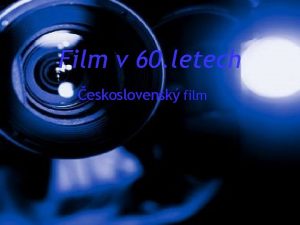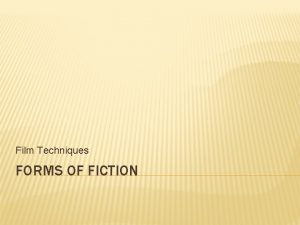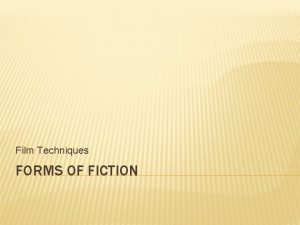Narrative Film Studies FM 2 Learning Intentions Narrative























- Slides: 23

Narrative Film Studies FM 2

Learning Intentions Narrative Theory Understand audience positioning Understand narrative structure Understand what factors drive narrative

Positioning the Audience Who’s Story Is It?

Responding to Characters Empathy Sympathy Feel with the Feel for the character Reaction Shots Eye Line Matches Camera Movement Audience in same space Observed by camera Distanced from the action

The Narrator Omniscience, Trust and Agenda

The narrator / storyteller Are we aware of a storyteller with a voice(over) Is the story teller a character in the narrative? Where & when is the storyteller How does a voiceover commentary add to our understanding of the action / characters & themes? Do we trust the storyteller? Does the storyteller betray our trust?

Structure Beginning, Middle & End

The Three Act Structure Act 1 Act 2 Act 3

The Three Act Structure Act 1 (Exposition) • Introduce the main character, sets up conflicts which is the story of the film. • At the end is the catalytic moment where the equilibrium is disrupted

The Three Act Structure Act 2 (Disequilibrium / Climax) Explored the consequences of the catalytic moment. This is usually the protagonist struggling to restore the equilibrium of the diegesis.

The Three Act Structure Act 3 (Denouement) With one final revelation /moment of crisis / conflict the story is resolved (a new equilibrium created) and the audience is told the outcomes. The themes should be evident in the denouement

Classic 3 Act Narrative Structure Disequilibrium/ Climax Revelation Disruption Narrative Organisation Time Equilibrium/ Exposition Equilibrium/ Denouement

Driving the Narrative Events / Relationships

Plot driven / Character Driven Character Plot (events) sparks the narrative (relationships) drive the narrative

Driving the Narrative Journey

Narratives are Journeys Screen stories are character journeys – we see someone trying to get what they want or need, and hurdles stand in their way. What is a character’s dramatic need? What does the character want to win, gain or achieve during the course of the narrative? • Internal journeys – Making an important realisation about themselves • External journeys - Literally moving or travelling to a new place

Conflict Binary Opposition (Levi-Strauss)

Binary Opposition Conflict Driving the Narrative Protagonist Antagonist Future Past Civilisation Savagery The Police Criminals Age Youth Equality Injustice Love Appearances Searching Finding Betrayal Redemption Entrapment Freedom Loss Discovery

Narrative Range Restricted / Unrestricted

Restricted Narrative Range Doesn’t reveal all the narrative information to the audience Such as in thrillers Events in the narrative which are unexplained are called ‘enigma codes’ Which will be explained later in the narrative In thrillers this is called the twist This opens the text to multiple readings, which is pleasurable for the audience

Unrestricted Narrative Range Gives the audience privileged position and we are privy to all narrative information / character motivations Such as in melodrama The audience’s overview of important facts leads to a heightened emotional response through the revelation of that information to ignorant characters Dramatic irony relies on unrestricted narratives

Barthes Understanding Narrative

Barthes & Narrative Explanation Codes The Enigma Code The Action Code The Symbolic Code Puzzles to be solved. Harry Potter’s lightening scar. Actions which progress the narrative. DVD – the chapter titles Behaviour /actions and their consequences. A visual metaphor Often used to symbolise opposition Connotation of characters, The Semic objects or settings that suggest Code meaning The Cultural Code Example A fence between two characters may symbolise their emotional distance / conflict. A red dress worn by a female character is likely to suggest her sexuality and/or danger. Culturally specific knowledge ‘Big Ben’ references the heart which makes meaning in a text. of political power in the UK.
 Narrative learning intentions
Narrative learning intentions Binary opposition example
Binary opposition example Poetry learning intentions
Poetry learning intentions Learning intentions examples
Learning intentions examples Learning intentions examples
Learning intentions examples Learning intentions and success criteria examples
Learning intentions and success criteria examples Persuasive writing images
Persuasive writing images Whole number stage 2
Whole number stage 2 Annotate poem generator
Annotate poem generator Fraction learning objectives
Fraction learning objectives Half turn symmetry
Half turn symmetry Learning intentions verbs
Learning intentions verbs Poetry learning intentions
Poetry learning intentions Learning intentions and success criteria for mathematics
Learning intentions and success criteria for mathematics Poetry learning intentions
Poetry learning intentions Poem on learning
Poem on learning Creative writing learning intentions
Creative writing learning intentions Acrostic of g
Acrostic of g The crucible character map
The crucible character map Learning intentions meaning
Learning intentions meaning Absolum duffy
Absolum duffy Dylan wiliam learning intentions
Dylan wiliam learning intentions Wedge film journal bearing
Wedge film journal bearing Film studies a level eduqas
Film studies a level eduqas
